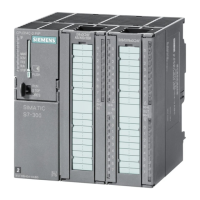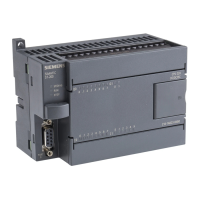63
Assume, for example, that the encoder generates 600 pulses
per revolution, and it takes 1000 motor revolutions to move
the platform from one position to another, moving the platform
from position 1 to position 6 (5 positions) takes 5000 motor
revolutions or 30,000 encoder pulses. In most practical
applications, the frequency of these pulses is too high for them
to be counted with inputs that are not associated with a high-
speed counter.
Interrupts S7-200 PLCs incorporate instructions for use with interrupts.
Interrupts are used to initiate a specific, short PLC program
segment, called an interrupt routine, when an internal or
external event occurs. After the interrupt routine has been
executed, control is returned to the main program.
Three types of interrupts are supported by S7-200 PLCs,
communication port interrupts, I/O interrupts, and time-
based interrupts. Communication port interrupts are used
to control a communication port operated in Freeport mode.
I/O interrupts are used to respond quickly to high-speed I/O
transitions, such as those associated with high-speed counters
or pulse train outputs. Time-based interrupts allow the user
program to execute an interrupt routine on a cyclic basis.
Each of these types of interrupts has an associated priority
that determines which interrupt is processed first in the event
that two or more interrupts are requested at the same time.
Communication port interrupts have the highest priority and
time-based interrupts have the lowest priority.
Pulse Training Output (PTO) S7-200 PLCs have two PTO/PWM generators that create either
a high-speed pulse train or a pulse width modulated waveform.
One generator is assigned to output point Q0.0 and the other to
output point Q0.1. When a generator is activated, it controls its
respective output.
Pulse Train Output (PTO) is used to provide a series of pulses
to an output device, such as a stepper motor driver. The PTO
provides a square wave output for a specified number of pulses
and a specified cycle time. The number of pulses can be from 1
to 4,294,967,295 pulses. The Pulse Train Output has a 50% duty
cycle. This means the pulse is off for the same amount of time
that it is on.

